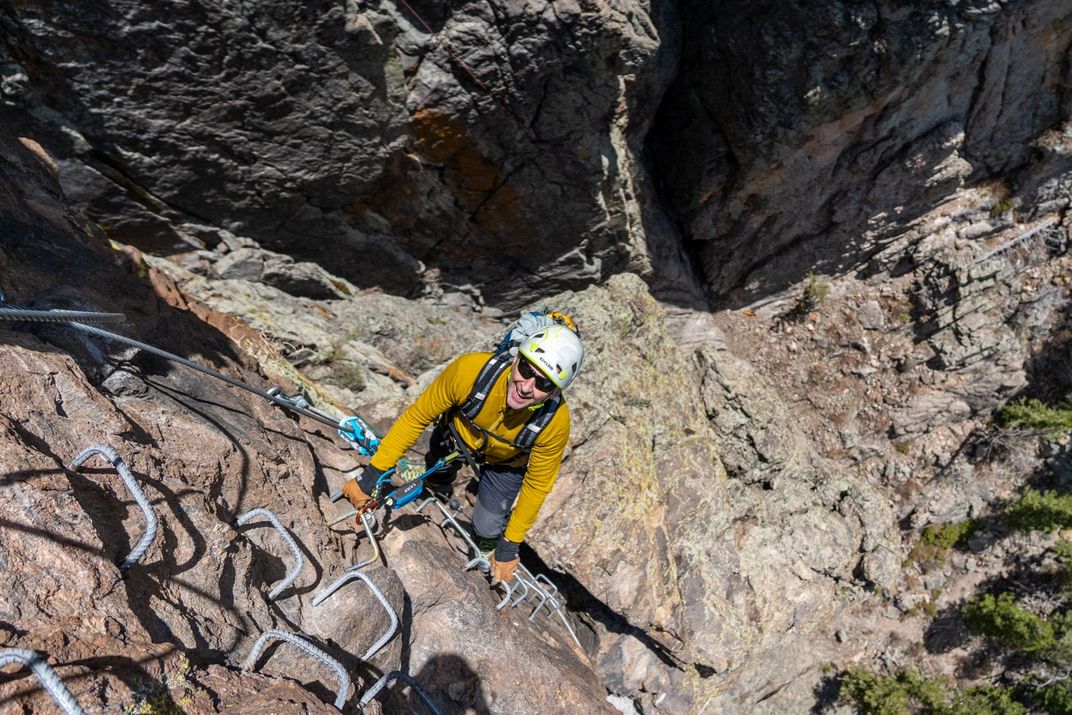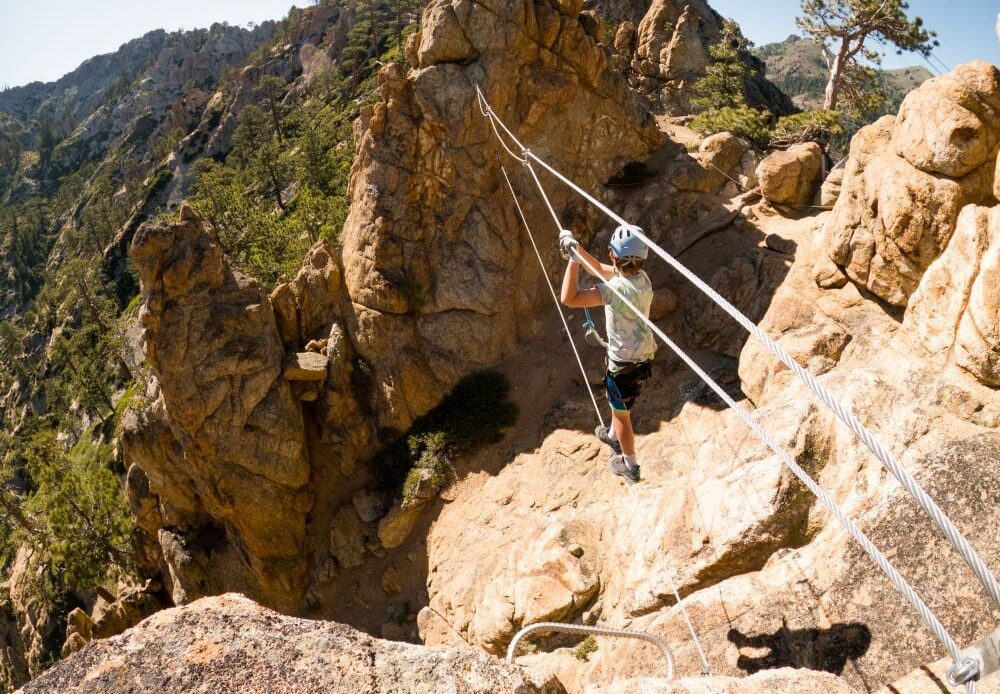By the end of the 2000s, via ferratas had begun pushing westward, with a handful of routes. Here, a child crosses a ravine on a slackline near Lake Tahoe, California.
VAWiley/Getty Images
Iron rungs cling to the nearly vertical vermillion cliffs outside Zion National Park in Utah. Strapped into harnesses and helmets, climbers make their slow ascent of the meandering route that stretches 450 feet from canyon to mesa.
These outdoor enthusiasts have no mountaineering or rock climbing training, and they don’t need it. If you can climb a ladder, you can climb a via ferrata, say those championing the assisted climbing routes. Adventurers are secured to a fixed cable with ropes and carabiners, so the “iron way” isn’t dangerous, it just sometimes feels that way.
Since the 1990s, via ferratas have drawn adventure tourists who seek the thrill of mountain climbing but lack the necessary skills to scale the rock on their own. Italy has more than 400 via ferratas and Austria over 550, while Germany, Switzerland and France combined offer more than 500. But despite decades of popularity in Europe, via ferratas haven’t caught on in the United States—until now.
“What makes via ferrata climbing so popular is that it doesn’t take a lot of prior technical climbing experience in order to participate,” says Reed Rowley, partner and director of development at Via Ferrata Works, a Colorado-based based company that has designed routes throughout the U.S. “The popularity is certainly growing in the U.S. and around the world, beyond Europe.”
Built in 2021 by Via Ferrata Works, the Cloud Ladder Via Ferrata is the steepest iron way in the United States. Via Ferrata Works
The via ferrata wasn’t initially built for thrill-seekers. Its origins are far more utilitarian. In 1915, as World War I raged across Europe, Austro-Hungarian forces ferociously battled Italian ones to maintain their control over the Dolomite Mountains. Because passages through the steep, jagged and brutally cold peaks were virtually impossible to maneuver without climbing gear, troops attached ropes and wooden ladders to the cliffs, lifelines that helped them to move supplies across the vertical landscape.
Although a handful of flimsier via ferratas equipped with hand hooks, carved footholds…
Click Here to Read the Full Original Article at Travel | smithsonianmag.com…
